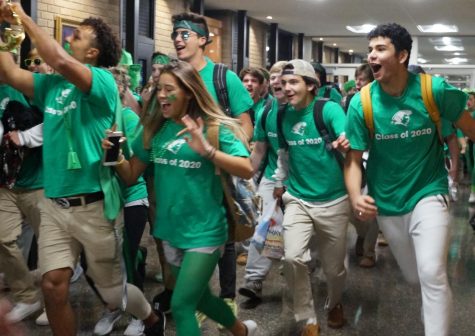Uniforms restrict students’ chances for self-expression
April 7, 2017
Walking down the halls on a typical dress down day, I observe the bright colors and laughter emanating from my fellow classmates. The halls swirl through my head with a vibrancy in stark contrast to the usual gloomy grey and black uniforms. As I glance around, I smile and take in this joyous environment.
These smiles may be because the students are comfortable in their own clothing for once, the opposite of their usual polos and uniform bottoms. More importantly, it may be because they are allowed to express themselves for a change, even through something as simple as clothing.
This lack of comfort associated with uniforms is nowhere more apparent than when a school has gendered uniforms (females wearing skirts and males wearing pants), since any students who do not conform to these genders, such as LGBTQ students, may feel uncomfortable in the place where they are supposedly allowed to be safe and grow.
In a letter written to the president of the United States, male transgender student ‘Seamus’ notes that he is forced to wear a skirt and blouse all day, which makes him highly uncomfortable. Furthermore, he says that wearing this uniform, “nearly destroyed me.”
In addition to making some students unnecessarily uncomfortable, uniforms can present complications for teachers. Skirt length policies put teachers in difficult positions when they have to address female students on the length of their skirt.
While students must be judged on arbitrary glances by teachers, they are also measured against their peers. Child and Teen Development Specialist Robyn Silverman said in an interview with the Today Show that female students compare their body types to fellow students wearing the same uniform.
“As a body image expert, I hear from students all the time that they feel it allows for a lot of comparison,” she said.
According to Silverman, this comparison creates a hostile environment for all students as they wind up distracted from the learning experience. Students want some way to express themselves, despite a strict dress code which implements some restrictions.
According to National Association of Elementary School Principals, approximately 90 percent of school leaders prefer to keep the dress code simple by requiring students to wear polos and chinos in place of dress shirts and ties.
This simplicity and uniformity hinders students’ ability to grow as independent decision makers.
By requiring students to wear a uniform every day, we strip them of having the freedom of deciding something as simple as clothing, which is a crucial component of self-expression.
While schools may aim to develop students as holistic individuals, their uniform policies contradict this message. Instead, they tell students to blend into a crowd, and to submit to authority unquestionably.
Overall, being able to pick your own clothing benefits the students and the community. Allowing students to choose their clothing lets students express themselves and takes the stress of uncomfortable confrontation off of teachers, creating a more peaceful environment.
Paige Alban is a In-Focus Editor for The Patriot and jcpatriot.com.






